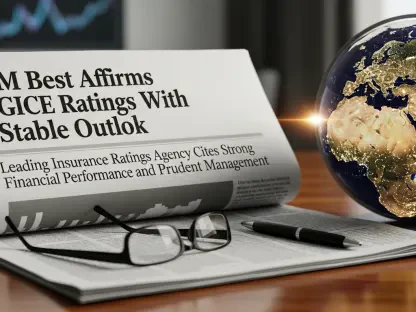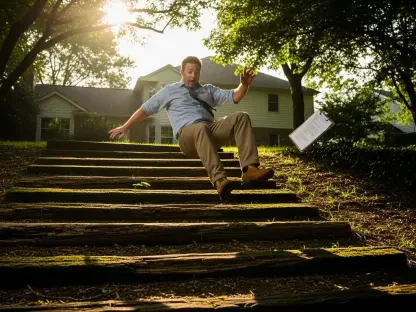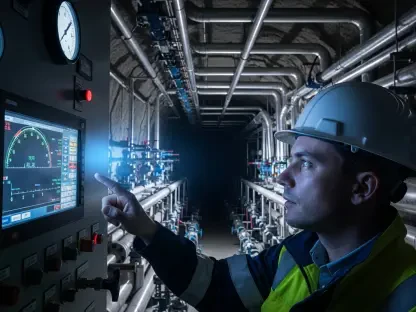In a quiet suburban neighborhood, a small water leak goes unnoticed until it floods an entire basement, racking up thousands in damages, and for many American homeowners, this isn’t just a nightmare scenario—it’s a looming threat that keeps them awake at night. With over half of U.S. homeowners worried that their insurance won’t cover unexpected disasters, the pressure is mounting. Amid rising premiums and unpredictable environmental risks, how are families supposed to feel safe in their own homes? The answer lies in a surprising ally: smart technology, which is reshaping the very foundation of home protection and insurance.
The significance of this shift cannot be overstated. As financial stress and severe weather events intensify, the traditional model of home insurance—waiting for disaster to strike—is becoming obsolete. A recent comprehensive survey of 1,000 homeowners and 400 independent insurance agents reveals a growing consensus: technology is no longer a luxury but a necessity. This transformation isn’t just about gadgets; it’s about empowering homeowners to prevent losses before they spiral out of control, while redefining the role of insurance in everyday life.
Unpacking Homeowner Anxiety: The Insurance Crisis
Homeowners across the nation are grappling with sleepless nights over the state of their insurance coverage. A staggering 57% of those surveyed express deep concern that their policies might fall short when disaster strikes, whether it’s a storm-damaged roof or a burst pipe. Rising premiums compound this unease, with 43% of agents identifying cost increases as a primary worry for their clients. The fear of being underinsured is no longer a distant concern but a pressing reality for many families.
Beyond policy gaps, the financial burden of home maintenance adds another layer of strain. About 25% of homeowners admit to postponing critical repairs due to budget constraints, with 60% citing high costs as the barrier. Another 44% prioritize other obligations, like debt repayment, over fixing aging home systems. Issues such as plumbing failures or sewer line backups, though less common, can still lead to devastating expenses, leaving many to wonder how to balance these risks in an era of economic uncertainty.
Environmental threats only heighten the stakes. Severe weather, noted by 39% of respondents as a top concern, continues to wreak havoc on properties, while 34% worry about the durability of older home infrastructures. This combination of financial and natural challenges paints a stark picture: without innovative solutions, the dream of homeownership risks becoming a source of constant anxiety rather than security.
Financial Fault Lines: The Cost of Delaying Protection
The economic pressures facing homeowners reveal a deeper struggle to maintain both property and peace of mind. Delaying repairs isn’t just a short-term fix; it often leads to larger, costlier problems down the line. For instance, a minor roof leak ignored today could result in structural damage tomorrow, with repair bills far exceeding initial estimates. This cycle of deferment, driven by tight budgets, traps many in a reactive rather than proactive mindset.
Agents, too, feel the weight of these financial fault lines. With 28% pointing to policy comprehension as a significant issue, there’s a clear disconnect between what homeowners understand about their coverage and what they actually have. Misunderstandings about deductibles or exclusions can leave families exposed when the unexpected happens. Bridging this gap is critical, as clarity in coverage could mean the difference between swift recovery and financial ruin.
The broader trend of economic uncertainty further complicates the landscape. As inflation drives up the cost of materials and labor, even routine maintenance becomes a luxury for some. Homeowners are forced to make tough choices, often gambling on the hope that disaster won’t strike before they can afford to act. This precarious balance underscores the urgent need for solutions that address both affordability and risk prevention.
Smart Tech Rising: A New Era of Home Defense
Enter smart home technology, a game-changer in the fight against property risks. An impressive 85% of independent insurance agents now recommend devices like smoke and carbon monoxide sensors, smart door locks, and whole-house water flow monitors to their clients. These tools aren’t just bells and whistles—they’re becoming essential shields, capable of detecting issues before they escalate into full-blown disasters.
Adoption rates tell a compelling story of acceptance, especially among younger generations. About 48% of homeowners already use security systems or smart surveillance, while 71% of Gen Z and Millennials have embraced these innovations in their homes. Real-world impact is evident: a smart water sensor, for example, can alert a homeowner to a leak within seconds, preventing thousands in potential damages. Similarly, smart locks deter break-ins, offering both safety and peace of mind.
Insurance incentives are fueling this trend further. Around 37% of homeowners have installed safety devices to qualify for policy discounts, a number that jumps to 56% among younger demographics. This synergy between technology and insurance signals a shift toward prevention over reaction, with tangible benefits for those willing to invest in these systems. As adoption grows, the line between homeownership and tech-savviness continues to blur, creating a new standard for property protection.
On the Ground: Voices Shaping the Change
Perspectives from the field bring this evolving landscape into sharp focus. Michael Tripp, a senior executive in personal lines sales and distribution, redefines the purpose of insurance as a proactive partnership. “It’s not just about covering a loss after it happens,” Tripp explains. “It’s about equipping homeowners with tools like smart sensors and agent guidance to stop issues before they start.” This vision of empowerment resonates with both agents and clients alike.
Agents, however, acknowledge the hurdles still in place. A notable 28% highlight policy comprehension as a persistent challenge, often seeing clients blindsided by coverage limits during claims. One agent shared a story of a homeowner who delayed plumbing repairs due to cost, only to face a major flood that wasn’t fully covered. Such experiences underscore the need for better education and communication, ensuring policies are as transparent as they are protective.
Homeowners, meanwhile, voice a mix of frustration and hope. A single parent from the Midwest described the struggle of balancing repair costs with daily expenses, yet found relief after installing a discounted smart security system through an agent’s recommendation. These personal accounts reveal a shared journey—navigating financial constraints while embracing technology as a lifeline. Together, these voices paint a picture of an industry at a turning point, driven by collaboration and innovation.
Taking Control: Practical Steps for Home Protection
For homeowners eager to safeguard their properties, actionable steps can make a significant difference. Start by integrating smart devices like water flow sensors or smoke detectors, which not only prevent disasters but may also unlock insurance discounts. Data shows 37% of homeowners already leverage such tools for savings, a practical move that reduces both risk and premiums over time.
Regular check-ins with insurance agents are equally vital. Scheduling annual reviews ensures clarity on coverage details, addressing gaps before they become costly surprises. Agents can also guide on policy adjustments as home systems age or environmental risks evolve, tailoring protection to specific needs. This ongoing dialogue transforms insurance from a static contract into a dynamic safety net.
Finally, prioritize small upgrades to avoid big repair bills. Simple actions, like reinforcing weatherproofing or updating outdated wiring, can mitigate major risks without breaking the bank. Combining these efforts with tech solutions creates a layered defense, empowering homeowners to take charge of their security. With the right tools and guidance, the daunting challenges of homeownership can shift from burdens to manageable responsibilities.
Reflecting on a Shifted Landscape
Looking back, the journey of home insurance in 2025 reveals a profound transformation, driven by the fusion of technology and proactive strategies. Homeowners and agents alike navigated a terrain of financial stress and environmental threats, finding common ground in smart solutions that redefined risk management. The adoption of devices like water sensors and smart locks marked a departure from reactive recovery to preemptive protection.
As challenges persisted, the industry adapted by prioritizing education and transparency, ensuring policies were understood rather than assumed. Personal stories of struggle and success illuminated the path, showing how small investments in tech could yield outsized security. This era underscored a vital truth: protection is no longer just a product but a partnership.
Moving forward, homeowners are encouraged to embrace these innovations, consulting agents to customize their coverage and integrating smart tools into daily life. Exploring local resources for tech incentives or community repair programs can further ease financial strain. As the landscape continues to evolve, staying informed and proactive remains the key to turning a house into a truly secure home.









